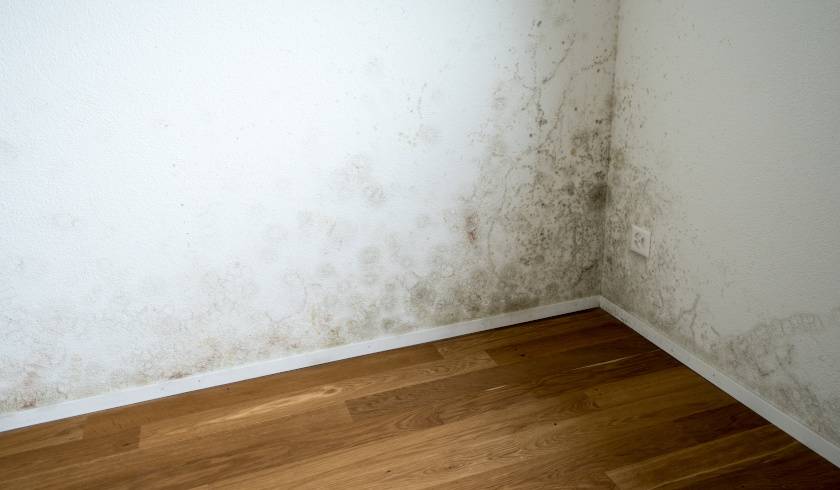How to avoid expensive mould problems in your investment property
Mould is a year-round problem in humid climates. In Australia’s southern states, autumn often heralds the arrival of the dreaded fungi. Moisture, heat, dark and a lack of air flow are just the right conditions for mould and mildew to thrive.

Mould is a fungus that can grow in homes when conditions are damp, dark and poorly ventilated. Common places for mould include bathrooms, kitchens, cluttered storage areas, wall and roof spaces or behind furniture. Mould can spread from one surface to another by contact or it can be air-borne.
More than being unsightly, mould can cause serious problems. When mould dries out or is disturbed, it releases spores, which can cause illness in some people or exacerbate existing health issues like asthma or respiratory infections.
Mould can also cause odours and damage to building materials, contents and structures. If left untreated, it can grow into plaster, ceiling cavities, behind walls, in and behind gyprock and under carpets and floorboards – potentially causing structural damage.
The cause of mould and mildew in a rental could stem from maintenance issues or from the action or inaction of tenants, which means fixing the problem could rest with either you or with your tenants.
When it’s your responsibility
It is your responsibility to remedy mould caused by structural issues, or stemming from a lack of maintenance or repair such as:
- a leak in the roof
- cracked roof tiles
- a faulty pipe
- malfunctioning gutters causing overflow into the property
- surface water leaking into the building
- wet building foundations such as rising damp
- indoor plumbing leaks
- lack of ventilation in roof cavities or under the floor
Landlords are required to keep the property in a reasonable state of repair, meet building, health and safety requirements, and ensure all repairs are undertaken within a reasonable time frame.
You could be in breach of the tenancy agreement if you don’t fulfil these obligations, for example, failing to get plumbing issues fixed, not repairing a leaky roof or not fixing broken exhaust fans, etc. Make sure you understand your responsibilities according to your state/territory legislation.
Your tenant may be able to seek compensation from you if mould damages their personal property and you failed to take reasonable steps. It is important for tenants to also understand their obligation to mitigate any losses too, for example, a tenant should remove clothes from a wardrobe where there is mould growing.
You or your agent should keep an eye out for potential problems during inspections and encourage tenants to immediately report any dampness, windows that don’t close properly or leaks – and respond immediately.
When it’s your tenant’s responsibility
Your tenant could be responsible for cleaning up outbreaks if their actions resulted in mould forming. For example:
- by showering without switching on the exhaust fan or opening a window
- leaving pools of water on tiles
- cooking without turning on the extractor fan
- using a drier without ventilation or drying clothes indoors and not airing the room afterwards
- using un-flued heaters, which can release water vapour into the air
- failing to properly clean up indoor liquid spills
- getting the carpet wet and neglecting to properly dry it out
- neglecting to wipe condensation from walls or windows
- storing large volumes of water-absorbent materials such as books or boxes in a damp space
- not cleaning the home properly
- leaving windows or doors open during rain
Tenants are responsible for keeping the rental property in a reasonable state of cleanliness, not intentionally or negligently causing or permitting damage, and informing landlord or agent of any damage as soon as possible.
If the tenant has caused the underlying problem that led to mould developing, or hasn’t informed you or your agent of an issue with the property, they could be held responsible for mould damage and may have to compensate you.
You or your agent should remind tenants of the need to adequately ventilate the property – air the home by opening doors and windows, use exhaust fans in bathrooms when showering and for 30 mins afterwards, open a window when the clothes drier is on, use the extractor fan over the stove, among other strategies.
It may also be a good idea to remind tenants that they (not you) are responsible for cleaning up any mould (which may include specialist cleaning) that has appeared because of their actions.
Exit mould
If the mould is widespread or identified within structures, a specialist cleaner will need to be engaged to sort out the problem.
You and your tenants should only attempt to clean up minor outbreaks of surface mould, for example if it is in a cupboard or wardrobe, a small patch on a wall or on bathroom tiles.
You are cautioned not to ask tenants to undertake any cleaning that could pose health or safety risks, for example that requires the use of a ladder or harsh chemicals (such as bleach). This cleaning should be contracted out to professionals who are licensed/certified and insured.
Insurance and mould
Neither landlord (landlord or building and contents) nor tenant (renter’s contents) can claim on their insurance for damage caused by mould. Damage caused by mould/mildew/fungus/algae is a standard exclusion in most building and contents policies in Australia.
As mould growth is frequently unavoidable and because it usually doesn’t cause any damage if it is taken care of quickly (i.e. damage is preventable), insurers will not offer cover for mould damage.
Insurance often won’t cover damage caused by mould or for mould removal or cleaning, even if it results from an insured event, such as storm damage or a burst water pipe (make sure to read to product disclosure statement to see what is and isn’t covered and under what circumstances).
This means the cost for cleaning, repair or replacement will rest with the party (you or your tenant) responsible for the presence of mould at the property in the first place.
Although a home can fall prey to the dreaded mould spores at any time of the year, the arrival of cooler weather is a prime time for breeding.
Get on top of any mould issues before they become expensive problems – as the cost of damage caused by mould and mildew will rest solely on the shoulders of the party who was responsible for its presence.
Claiming for mould damage or for mould cleaning/removal on landlords’ or renters’ insurance is generally not an option, so it pays for you, your agent and your tenants to keep on top of maintenance, repairs, cleaning and ventilation to stop the formation and spread of mould in your investment property.

